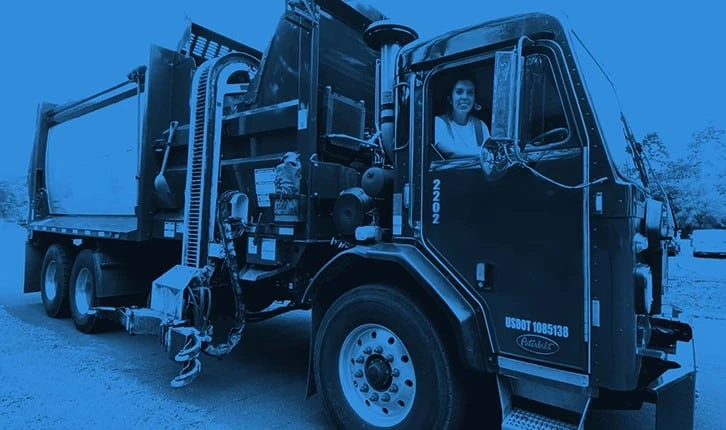
Photo courtesy McNeilus
McNeilus Truck and Manufacturing Inc., a refuse truck manufacturer in Dodge Center, Minnesota, has announced plans to debut three products at WasteExpo, which takes place June 28 to 30 in Las Vegas. The company will feature its new Zero Radius Automated Side Loader, CartSeeker Curbside Automation and Metro Pak Plus Rear Loader in the McNeilus booth 1823.
“We are inspired by customer input and informed by industry trends to continually innovate on our best-in-class trucks,” says Matt McLeish, vice president of sales and marketing at McNeilus Truck and Manufacturing Inc. “Our Metro Pak Plus Rear Loader and Zero Radius Automated Side Loader with CartSeeker Curbside Automation is a prime example.”
McNeilus Zero Radius Automated Side Loader
According to a news release from McNeilus, the Zero Radius Automated Side Loader features the largest hopper available of any side loader on the market and a fast pack cycle.
The Zero Radius Automated Side Loader offers radius operation allowing for clearance issues, narrow streets and alleyways. The arm reaches rather than swings out to grab 30-to-110-gallon cans. With an optional 12-foot extended reach, it is designed to navigate cul-de-sacs and obstructions such as parked cars.
Other enhancements include the McNeilus CODE controls system, which provides complete vehicle diagnostics. The side loader includes an integrated smart-fuse panel, reduced hardware requirements and pretrip reminders.
This refuse truck features Tailgate CNG, a system that allows trucks to stand up to the demands of refuse collection and CartSeeker Curbside Automation that identifies and locates curbside waste carts and fully automates the operation of the truck’s robotic lift arm without joystick manipulation.
The company says the Zero Radius Automated Side Loader benefits from fuel savings due to load-sense hydraulics. A full-eject body reduces chassis wear and simplifies operations, reducing exposure to hazards. A dump valve vents the oil, limiting operating pressure and helping the truck run more efficiently. A nonregen spool for ideal packer function and system pressure delivers the same amount of work with a lower amount of pressure.
It is designed to be durable and includes carriage enhancements, new finger pins and finger weldments bushings with a phase-in of a higher quality spherical bearing. The truck features bolting, which means operators can replace the wind guard as often as needed. A nonscrew door on the truck’s street side makes access and maintenance easier.
Metro Pak Plus Rear Loader
The Metro Pak Plus Rear Loader is a lower cost, lower weight option compared with other rear loaders. This truck caters to rural or condensed areas and helps fill fleet or route gaps, the company says.
Its compact body size is designed for weight-restricted roadways, smaller routes and tighter areas. The Metro Pak Plus Rear Loader is available in 20-cubic-yard, 17-cubic-yard and 14-cubic-yard capacities. The company says the loader is quick, with a 24-second packing cycle and compaction ratio of 650 to 900 pounds per cubic yard. Reinforced design on tailgate side walls and pack-and-sweep panel mean it will stand up to tough wear and tear.
CartSeeker Curbside Automation
McNeilus’ partner CartSeeker Curbside Automation uses a patented artificial intelligence-based cart recognition technology that identifies and locates curbside waste carts and fully automates the operation of the truck’s robotic lift arm without joystick manipulation. This helps cycle times, training time, safety, predictable scheduling and maintenance.
The robust vision recognition system technology identifies and determines the XYZ coordinates of curbside garbage carts in differing backgrounds, lighting and weather conditions. The carts are identified when near other carts at various angles of the curb. They can also be identified if they're open, closed or overflowing. Once the cart is identified, the operator stops the truck in front of the cart, which is then automatically picked up, dumped and placed back on the ground.
Latest from Waste Today
- CHaRM facility opens in Fairhope, Alabama
- Liebherr to exhibit at upcoming IRPT event
- Investment firm acquires majority stake in CP Group
- Montauk Renewables reports net loss in Q2
- Enviri losing streak continues
- Clean Harbors retains profitability in Q2
- Reworld relocates
- IWS acquires Seaside Waste Services





